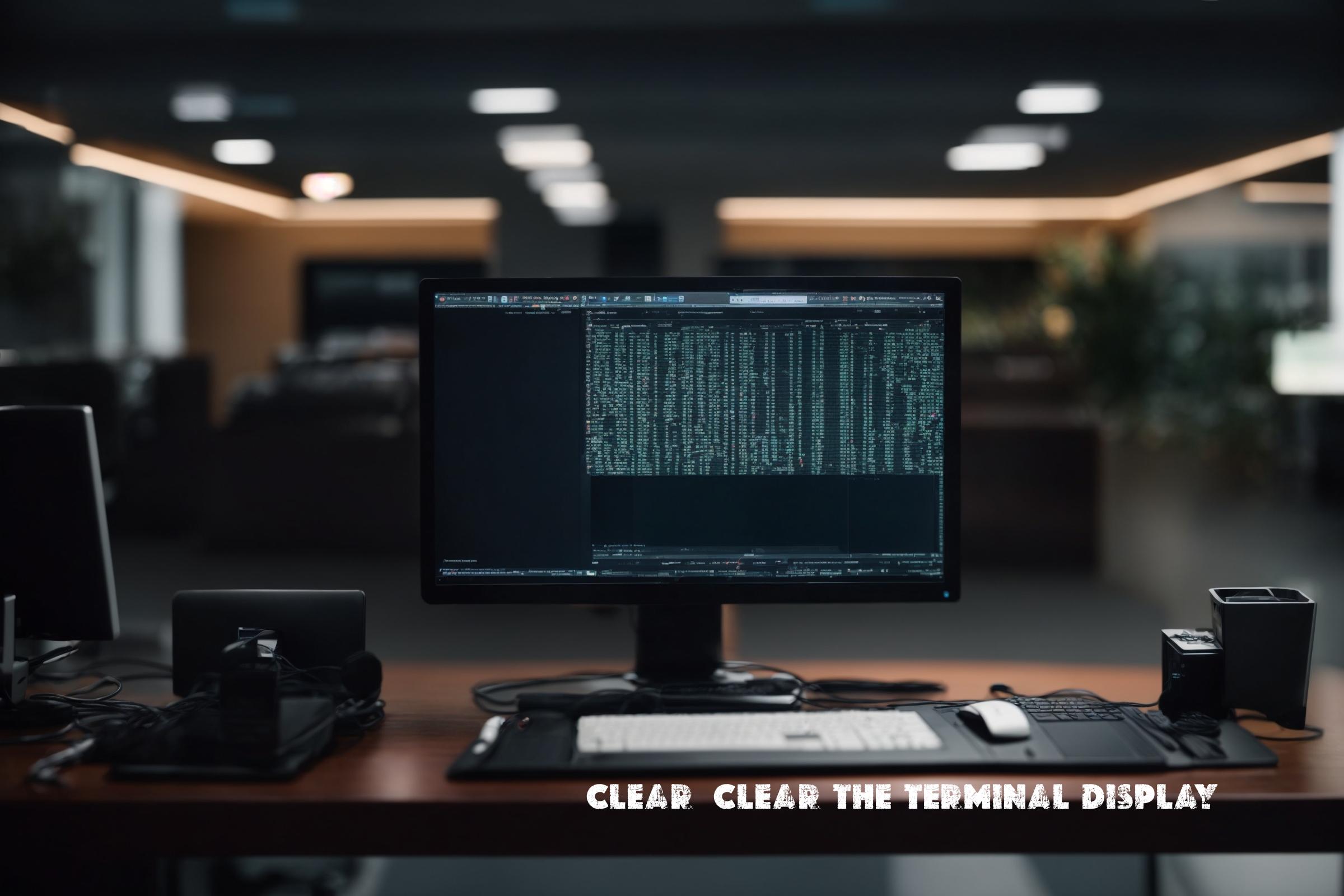
Clear (Clear the terminal display) – Usage in Linux Systems
The clear command is used to clear the terminal display. It is a simple utility that clears the screen of the terminal, removing all previously displayed output and leaving a blank screen. This can be useful when the terminal screen becomes cluttered with too much text and you want to start with a clean slate.
The clear command is typically used in command-line interfaces (CLI) on Unix-like operating systems, including Linux. It is often used in shell scripts or as part of command sequences to clear the screen before displaying new output.
Official page of clear (Clear the terminal display): https://man7.org/linux/man-pages/man1/clear.1.html
Programming Languages
The clear command is not a standalone program or package. It is a built-in command in most Unix-like operating systems, including Linux. Therefore, it is not written in any specific programming language.
Installation
The clear command does not require any installation as it is already available on most Unix-like operating systems, including Linux. It is part of the core utilities package, which is typically pre-installed on these systems.
Supported Operating Systems
The clear command is supported on the following operating systems:
- Linux
- Unix
- macOS
- BSD
Command Examples
Here are some examples of how to use the clear command:
clear: This command clears the terminal screen and leaves a blank screen.clear -x: This command clears the terminal screen and also clears the scrollback buffer, removing all previously displayed output.
Similar Commands
There are several other commands that serve a similar purpose to the clear command:
tput clear: This command uses thetpututility to clear the terminal screen. It provides more flexibility and control over the terminal display.reset: This command resets the terminal to its default state, including clearing the screen and resetting any terminal settings that may have been modified.Ctrl+L: This keyboard shortcut can be used to clear the terminal screen. It is a built-in shortcut in many terminal emulators.
Script Examples
Here are three examples of scripts that use the clear command for automation:
Script 1: clear_screen.sh
#!/bin/bash
# This script clears the terminal screen and displays a message
clear
echo "Welcome to the Clear Screen Script!"
Script 2: clear_logs.sh
#!/bin/bash
# This script clears the terminal screen and deletes log files
clear
echo "Clearing log files..."
rm -rf /var/log/*.log
echo "Log files cleared!"
Script 3: clear_and_run.sh
#!/bin/bash
# This script clears the terminal screen, compiles a C program, and runs it
clear
echo "Compiling program..."
gcc program.c -o program
echo "Program compiled!"
echo "Running program..."
./program
echo "Program finished!"
List of Functions and Constants
| Function/Constant | Description |
|---|---|
clear |
Clears the terminal screen |
tput clear |
Clears the terminal screen using tput |
reset |
Resets the terminal to its default state |
Ctrl+L |
Keyboard shortcut to clear the terminal screen |
Conclusion
The clear command is a simple utility that clears the terminal screen. It is commonly used in command-line interfaces on Unix-like operating systems, including Linux. The command is used to remove previously displayed output and start with a clean slate. It is often used in shell scripts or as part of command sequences to clear the screen before displaying new output.
The clear command is widely used by system administrators, developers, and anyone working with the command line on a regular basis. It helps in keeping the terminal screen organized and makes it easier to read and understand the output. Whether it’s clearing the screen before running a new command or automating tasks with scripts, the clear command is a handy tool in the Linux ecosystem.

This article incorporates information and material from various online sources. We acknowledge and appreciate the work of all original authors, publishers, and websites. While every effort has been made to appropriately credit the source material, any unintentional oversight or omission does not constitute a copyright infringement. All trademarks, logos, and images mentioned are the property of their respective owners. If you believe that any content used in this article infringes upon your copyright, please contact us immediately for review and prompt action.
This article is intended for informational and educational purposes only and does not infringe on the rights of the copyright owners. If any copyrighted material has been used without proper credit or in violation of copyright laws, it is unintentional and we will rectify it promptly upon notification. Please note that the republishing, redistribution, or reproduction of part or all of the contents in any form is prohibited without express written permission from the author and website owner. For permissions or further inquiries, please contact us.


